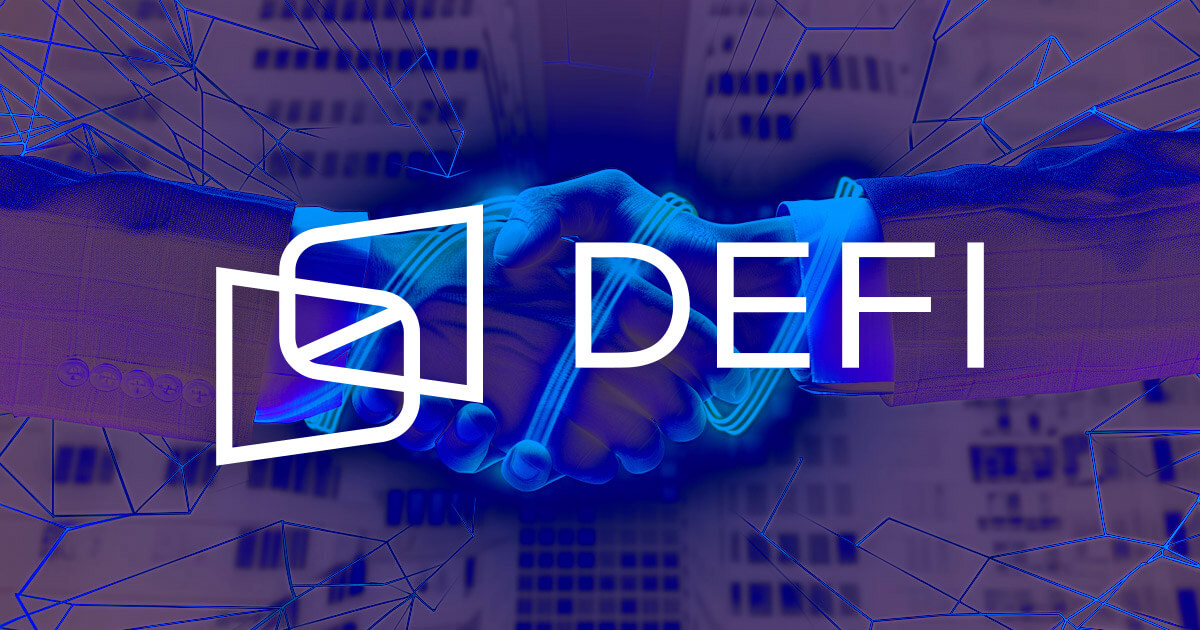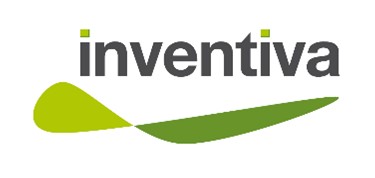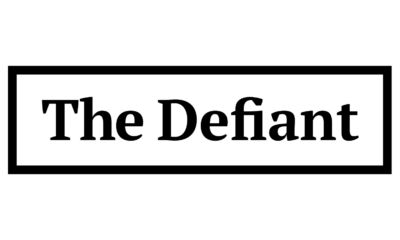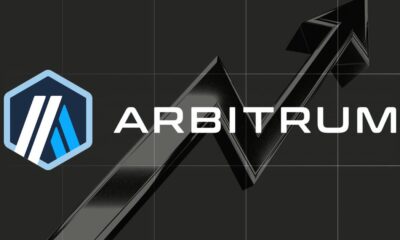DeFi
Bitcoin DeFi is far from failing, its popularity is “not that far away”: Bitlayer co-founder

Key points to remember
- BTCfi tokens are down 23.4% in 2024, but the ecosystem’s TVL has increased by over 100%.
- There are three main factors slowing BTCfi adoption: market distractions, user experience issues, and general cryptocurrency market conditions.
Share this article
Decentralized finance tokens Bitcoin (BTCfi) are down 23.4% on average in 2024, according to data Artemis. This contrasts with the hype shared by investors that the Bitcoin decentralized finance (BTCfi) ecosystem would surge this year. However, Charlie Hu, the co-founder of layer-2 blockchain Bitlayer, emphasizes that this narrative is far from dead and lists three reasons why BTCfi is lagging.
“When the BRC-20 came out, there was almost no excitement in the market. The Web3 space was in a bear market, and there was not much to talk about during that period when trading volume was low. Compared to now, we have other things to attract people’s attention, so distraction is the first reason,” Hu explains.
BTCfi is a relatively new ecosystem consisting of blockchains built on the Bitcoin blockchain, which serve as base layers for decentralized applications. The total value locked (TVL) of this ecosystem has increased by more than 100% in 2024, according to to the data aggregator DefiLlama.
However, Hu mentions that BTCfi being something new, its user experience is still not optimized. This creates confusion, which leads to liquidity fragmentation, and this is the second reason why BTCfi has still not taken off.
“I think there are still some things we need to educate the market on. There are a lot of people who still don’t know how to bridge the gap between layer 1 assets and layer 2 of Bitcoin. Now you’re moving out of layer 1 of Bitcoin, but what are the use cases that actually make sense?”
Therefore, by solving user familiarity with Layer 2 Bitcoin applications, Hu believes that a “big wave of liquidity” will occur and emphasizes that protocols such as Bitlayer have a key role in this process.
“Bitlayer is one of the first destination chains among all these liquidity protocols. We are trying to connect all these programmable Bitcoins [wrapped tokens] in our ecosystem and use that liquidity to support all the DeFi protocols, because you can’t do much with them without liquidity.”
The third reason is related to the cryptocurrency market as a whole, as prices and trading volumes have been declining since March. Therefore, the BTCfi narrative needs on-chain activity to return to take off, and the Bitlayer co-founder believes that this is “not that far away.”
An underlying scalability problem
Implementing layer 2 blockchains solves the scalability problem, but only up to the second page. Taking Ethereum as an example, the introduction of a dedicated block space within blocks, called “blobs,” was necessary to handle the growing number of different layer 2 chains created on top of its infrastructure.
As the number of layer 2 blockchains created on Bitcoin also increases, it is quite normal that this ecosystem faces the same problem. However, Charlie Hu is not worried about it, citing the developments made on this front.
“We are still at the very beginning of the infrastructure level. There are a few teams trying to build zero-knowledge proofs on Bitcoin, and we think ZK-snarks have more cost advantages in terms of scalability. Anything you want to write on the Merkle tree and transmit on the Bitcoin block is expensive, so it is important to have a cost-effective way to do the state transition and verify it on Bitcoin,” Hu shares.
The Bitlayer co-founder also discusses the ongoing project of introducing the OP_CAT code on the Bitcoin blockchain, which would facilitate the interaction of data on the network. OP_CAT is an operation code disabled by Satoshi Nakamoto in 2010 to prevent possible exploitation of vulnerabilities while the Bitcoin blockchain was still nascent. However, the idea was taken up by the group known as Taproot Wizards.
The introduction of OP_CAT could significantly improve the ability to build applications using Bitcoin as infrastructure and is also highlighted by Hu as a way to boost scalability. However, this is not a goal for the current bull cycle.
“In this cycle, the goal is to unlock the existing liquidity of Bitcoin, which has not been a yield-generating asset for the last 15 years, sitting in cold wallets doing nothing, to now become programmable money.”
Why not use Ethereum instead?
A common feature of all Layer 2 blockchains built on Bitcoin is compatibility with the Ethereum Virtual Machine (EVM). This means that the code of Ethereum-native decentralized applications, such as Aave or Uniswap, can be replicated across these Layer 2 networks.
Users might therefore ask why build an ecosystem around Bitcoin instead of maintaining the current landscape that connects Bitcoin to Ethereum native applications. Hu explains that while Ethereum is an important infrastructure for Web3, Bitcoin offers different values and shows greater long-term sustainability.
“If we look long term, what ecosystem can survive in the next decade or two, we think proof of work is still one of the best consensus for a decentralized network, for a public chain. If we choose a public chain that can survive with solid assets still on the chain, it’s definitely Bitcoin.”
Additionally, the Bitlayer co-founder adds that Bitcoin presents itself as a more decentralized ground to build a DeFi ecosystem, which translates to safer assets. So it makes sense for Hu to integrate battle-tested Ethereum applications with Layer 2 Bitcoin blockchains.
“Security of assets is the most important thing in terms of decentralized finance and so on. I think what’s happening on Ethereum is great, but compared to Bitcoin, it’s just a different level of value, a different level of diversity.”
Share this article
DeFi
Pump.Fun is revolutionizing the Ethereum blockchain in terms of daily revenue

The memecoin launchpad saw the largest daily revenue in all of DeFi over the past 24 hours.
Memecoin launchpad Pump.Fun has recorded the highest gross revenue in all of decentralized finance (DeFi) in the last 24 hours, surpassing even Ethereum.
The platform has raised $867,429 in the past 24 hours, compared to $844,276 for Ethereum, according to DeFiLlama. Solana-based Telegram trading bot Trojan was the third-highest revenue generator of the day, as memecoin infrastructure continues to dominate in DeFi.
Pump.Fun generates $315 million in annualized revenue according to DeFiLlama, and has averaged $906,160 per day over the past week.
Income Ranking – Source: DeFiLlama
The memecoin frenzy of the past few months is behind Pump.fun’s dominance. Solana-based memecoins have been the main drug of choice for on-chain degenerates.
The app allows non-technical users to launch their own tokens in minutes. Users can spend as little as $2 to launch their token and are not required to provide liquidity up front. Pump.Fun allows new tokens to trade along a bonding curve until they reach a set market cap of around $75,000, after which the bonding curve will then be burned on Raydium to create a safe liquidity pool.
Pump.Fun generates revenue through accrued fees. The platform charges a 1% fee on transactions that take place on the platform. Once a token is bonded and burned on Raydium, Pump.fun is no longer able to charge the 1% fee.
Ethereum is the blockchain of the second-largest cryptocurrency, Ether, with a market cap of $395 billion. It powers hundreds of applications and thousands of digital assets, and backs over $60 billion in value in smart contracts.
Ethereum generates revenue when users pay fees, called gas and denominated in ETH, to execute transactions and smart contracts.
DeFi
DeFi technologies will improve trading desk with zero-knowledge proofs

DeFi Technologies, a Canadian company financial technology companyis set to enhance its trading infrastructure through a new partnership with Zero Computing, according to a July 30 statement shared with CryptoSlate.
The collaboration aims to integrate zero-knowledge proof tools to boost operations on the Solana And Ethereum blockchains by optimizing its ability to identify and execute arbitrage opportunities.
Additionally, it will improve the performance of its DeFi Alpha trading desk by enhancing its use of ZK-enabled maximum extractable value (MEV Strategies).
Zero knowledge Proof of concept (ZKP) technology provides an additional layer of encryption to ensure transaction confidentiality and has recently been widely adopted in cryptographic applications.
Optimization of trading strategies
DeFi Technologies plans to use these tools to refine DeFi Alpha’s ability to spot low-risk arbitrage opportunities. The trading desk has already generated nearly $100 million in revenue this year, and this new partnership is expected to further enhance its algorithmic strategies and market analysis capabilities.
Zero Computing technology will integrate ZKP’s advanced features into DeFi Alpha’s infrastructure. This upgrade will streamline trading processes, improve transaction privacy, and increase operational efficiency.
According to DeFi Technologies, these improvements will increase the security and sophistication of DeFi Alpha’s trading strategies.
The collaboration will also advance commercial approaches for ZK-enabled MEVs, a new concept in Motor vehicles which focuses on maximizing value through transaction fees and arbitrage opportunities within block production.
Additionally, DeFi Technologies plans to leverage Zero Computing technology to develop new financial products, such as zero-knowledge index exchange-traded products (ETPs).
Olivier Roussy Newton, CEO of DeFi Technologies, said:
“By integrating their cutting-edge zero-knowledge technology, we not only improve the efficiency and privacy of our transactions, but we also pave the way for innovative trading strategies.”
Extending Verifiable Computing to Solana
According to the release, Zero Computing has created a versatile, chain-agnostic platform for generating zero-knowledge proofs. The platform currently supports Ethereum and Solana, and the company plans to expand compatibility with other blockchains in the future.
The company added that it is at the forefront of introducing verifiable computation to the Solana blockchain, enabling complex computations to be executed off-chain with on-chain verification. This development represents a significant step in the expansion of ZKPs across various blockchain ecosystems.
Mentioned in this article
Latest Alpha Market Report
DeFi
Elastos’ BeL2 Secures Starknet Grant to Advance Native Bitcoin Lending and DeFi Solutions

Singapore, Asia, July 29, 2024, Chainwire
- Elastos BeL2 to Partner with StarkWare to Integrate Starknet’s ZKPs and Cairo Programming Language with BeL2 for Native DeFi Applications
- Starknet integration allows BeL2 to provide smart contracts and dapps without moving Bitcoin assets off the mainnet
- Starknet Exchange Validates the Strength of BeL2’s Innovation and Leadership in the Native Bitcoin Ecosystem
Elastos BeL2 (Bitcoin Elastos Layer2) has secured a $25,000 grant from Starknet, a technology leader in the field of zero-knowledge proofs (ZKPs). This significant approval highlights the Elastos BeL2 infrastructure and its critical role in advancing Bitcoin-native DeFi, particularly Bitcoin-native lending. By integrating Starknet’s ZKPs and the Cairo programming language, Elastos’ BeL2 will enhance its ability to deliver smart contracts and decentralized applications (dapps) without moving Bitcoin (BTC) assets off the mainnet. This strategic partnership with Starknet demonstrates the growing acceptance and maturity of the BeL2 infrastructure, reinforcing Elastos’ commitment to market leadership in the evolving Bitcoin DeFi market.
Starknet, developed by StarkWare, is known for its advancements in ZKP technology, which improves the privacy and security of blockchain transactions. ZKPs allow one party to prove to another that a statement is true without revealing any information beyond the validity of the statement itself. This technology is fundamental to the evolution of blockchain networks, which will improve BeL2’s ability to integrate complex smart contracts while preserving the integrity and security of Bitcoin.
“We are thrilled to receive this grant from Starknet and announce our partnership to build tighter integrations with its ZKP technology and the Cairo programming language,” said Sasha Mitchell, Head of Bitcoin Layer 2 at Elastos. “This is a major milestone for BeL2 and a true recognition of the maturity and capabilities of our core technology. This support will allow us to further develop our innovation in native Bitcoin lending as we look to capitalize on the growing acceptance of Bitcoin as a viable alternative financial system.”
A closer integration with Cairo will allow BeL2 to leverage this powerful programming language to enhance Bitcoin’s capabilities and deliver secure, efficient, and scalable decentralized finance (DeFi) applications. Specifically, the relationship with Cairo reinforces BeL2’s core technical innovations, including:
- ZKPs ensure secure and private verification of transactions
- Decentralized Arbitrage Using Collateralized Nodes to Supervise and Enforce Fairness in Native Bitcoin DeFi
- BTC Oracle (NYSE:) facilitates cross-chain interactions where information, not assets, is exchanged while Bitcoin remains on the main infrastructure
BeL2’s vision goes beyond technical innovation and aims to innovate by creating a new financial system. The goal is to build a Bitcoin-backed Bretton Woods system, address global debt crises, and strengthen Bitcoin’s role as a global hard currency. This new system will be anchored in the integrity and security of Bitcoin, providing a stable foundation for decentralized financial applications.
As integration with Starknet and the Cairo programming language continues, BeL2 will deliver further advancements in smart contract capabilities, decentralized arbitration, and innovative financial products. At Token 2049, BeL2 will showcase further innovations in its core technologies, including arbitrators, that will underscore Elastos’ vision for a fairer decentralized financial system rooted in Bitcoin.
About Elastos
Elastos is a public blockchain project that integrates blockchain technology with a suite of redesigned platform components to produce a modern Internet infrastructure that provides intrinsic privacy and ownership protection for digital assets. The mission is to create open source services that are accessible to the world, so developers can create an Internet where individuals own and control their data.
The Elastos SmartWeb platform enables organizations to recalibrate how the Internet operates to better control their own data.
https://www.linkedin.com/company/elastosinfo/
ContactPublic Relations ManagerRoger DarashahElastosroger.darashah@elastoselavation.org
DeFi
Compound Agrees to Distribute 30% of Reserves to COMP Shareholders to End Alleged Attack on Its Governance

Compound will introduce the staking program in exchange for Humpy, a notorious whale accused of launching a governance attack on the protocol, negating a recently adopted governance proposal.
Compound is launching a new staking program for COMP holders as a compromise with Humpy, a notorious DeFi whale accused of launching a governance attack against the veteran DeFi protocol.
On July 29, Bryan Colligan, head of business development at Compound, published a governance proposal outlining plans for a new compound participation product that would pay 30% of the project’s current and future reserves to COMP participants.
Colligan noted that the program was requested by Humpy in exchange for his agreement Proposition 289 — which sought to invest 499,000 COMP worth approximately $24 million into a DeFi vault controlled by Humpy, and which appears to have been forced by Humpy and his associates over the weekend.
“We propose the following staking product that meets Humpy’s stated interests as a recent new delegate and holder of COMP in exchange for the repeal of Proposition 289 due to the governance risks it poses to the protocol,” Colligan said. “The Compound Growth Program…will execute the above commitments, given the immediate repeal of Proposition 289.”
Colligan added that the proposal would expire at 11:59 p.m. EST on July 29. Had Humpy not rescinded Proposition 289, Compound would move forward with it. Proposition 290 — block Humpy using the Compound team’s multi-sig to deploy a new governor contract removing the delegate’s governance power behind Proposition 289.
Hunchback tweeted that Proposition 289 had been repealed a few hours ago. “Glad to have brought Compound Finance back into the spotlight,” they said. added. “StakedComp… finally becomes a yield-generating asset!
Markets reacted favorably to the resolution, with the price of COMP increasing by 6.2% over the past 24 hours, according to CoinGecko.
Attack on governance
Proposition 289 proposed investing 499,000 COMP from the Compound treasury into goldCOMP, a yield-generating vault of the Humpy-linked Golden Boys team.
The proposal passed with nearly 52 percent of the vote on July 28, despite two previous iterations of the proposal being defeated by strong opposition. Can And JulyThe proposals notably asked for only 92,000 COMP, with security researchers warning that any deposit of tokens into the goldCOMP vault would cede their governance power.
In May, Michael Lewellen of Web3 security firm OpenZeppelin, note The first proposal was submitted by a new governance delegate who was suddenly awarded 228,000 COMP by five wallets that got their tokens from the Bybit exchange. Combined with his own tokens, the delegate got 325,333 COMP, which is over 81% of the 400,000 tokens required for a governance proposal to reach quorum.
“We have been alerting the community to the risk that these delegates could support a potential attack on governance,” Lewellen said. “The timing of the new proposal and these recent delegations are suspect.”
Read more: Compound community accuses famous whale of attacking engineering governance
-

 Videos2 weeks ago
Videos2 weeks agoAbsolutely massive: the next higher Bitcoin leg will shatter all expectations – Tom Lee
-

 News11 months ago
News11 months agoVolta Finance Limited – Director/PDMR Shareholding
-

 News11 months ago
News11 months agoModiv Industrial to release Q2 2024 financial results on August 6
-

 News11 months ago
News11 months agoApple to report third-quarter earnings as Wall Street eyes China sales
-

 News12 months ago
News12 months agoNumber of Americans filing for unemployment benefits hits highest level in a year
-

 News1 year ago
News1 year agoInventiva reports 2024 First Quarter Financial Information¹ and provides a corporate update
-

 News1 year ago
News1 year agoLeeds hospitals trust says finances are “critical” amid £110m deficit
-

 DeFi1 year ago
DeFi1 year agoPump.Fun operated by Insider Exploit
-

 Videos1 year ago
Videos1 year ago$1,000,000 worth of BTC in 2025! Get ready for an UNPRECEDENTED PRICE EXPLOSION – Jack Mallers
-

 Videos1 year ago
Videos1 year agoABSOLUTELY HUGE: Bitcoin is poised for unabated exponential growth – Mark Yusko and Willy Woo
-

 Markets1 year ago
Markets1 year agoWhale Investments in Bitcoin Hit $100 Billion in 2024, Fueling Insane Investor Optimism ⋆ ZyCrypto
-

 DeFi1 year ago
DeFi1 year agoActive Users on Arbitrum Overtake Solana Despite ARB Token Value Drop – DL News





